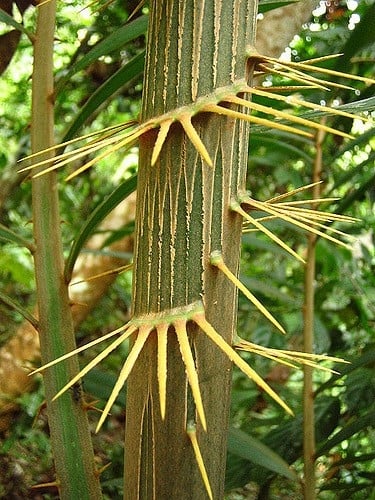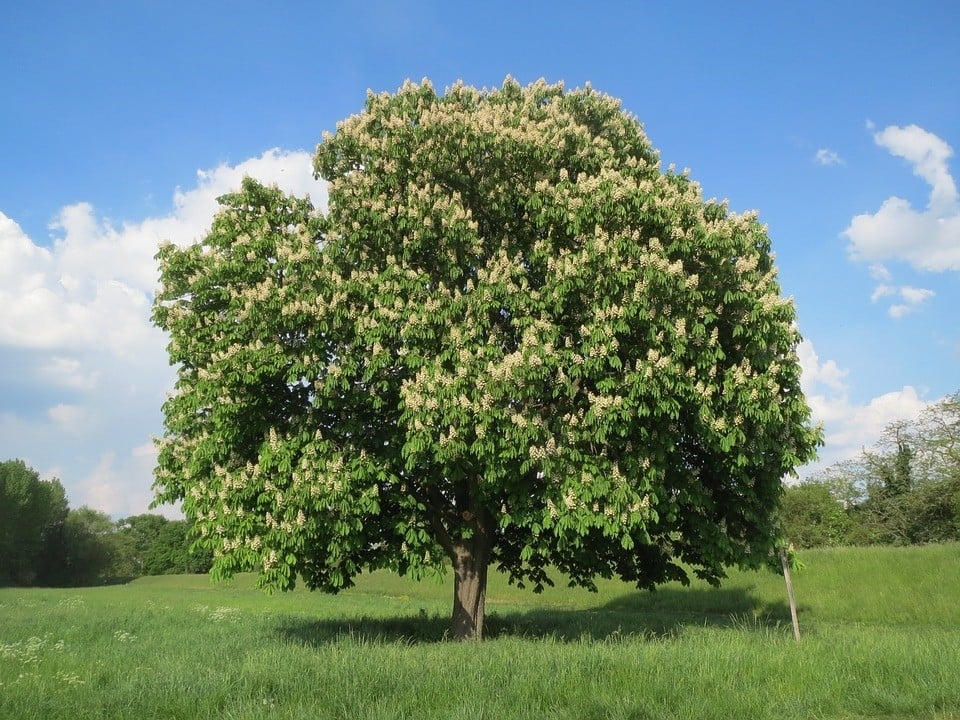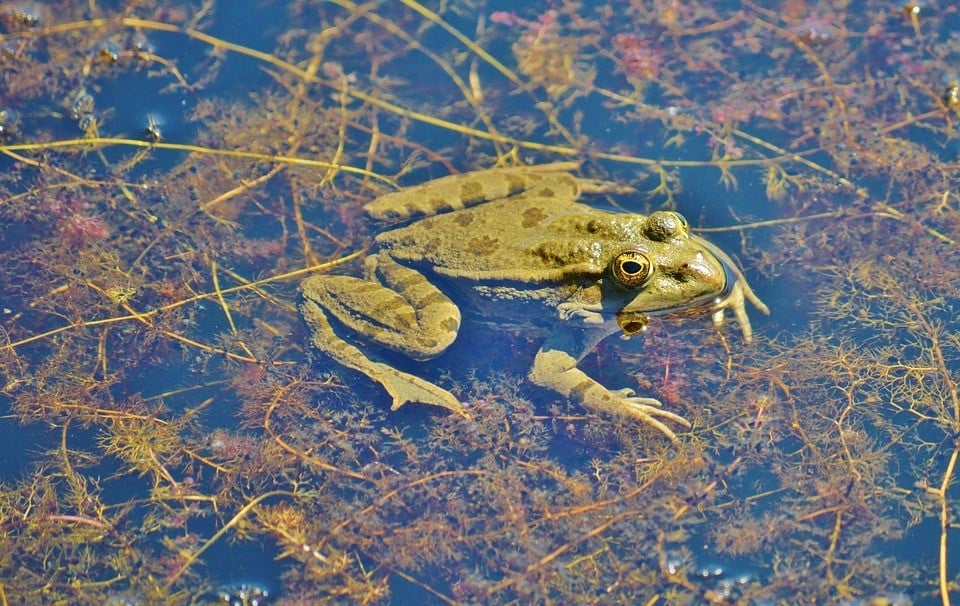How to Make Your Garden Eco-Friendly
A comprehensive guide to making small changes to your garden that will have a positive impact on the environment.
We are accustomed to the messages and practical ideas for living as eco-friendly as possible IN our homes, but we often neglect the garden. Making the garden more eco-friendly is a major step in reducing your carbon footprint. With a little know-how, it is easy to achieve.
We are accustomed to the messages and practical ideas for living as eco-friendly as possible IN our homes, but we often neglect the garden. Making the garden more eco-friendly is a major step in reducing your carbon footprint. With a little know-how, it is easy to achieve.
What is an Eco-Friendly Garden?
An eco-friendly garden is one that encourages a balance between plants, trees, insects, birds, animals and humans naturally, rather than by using insecticides, pesticides or other manufactured means.
What makes for an Eco-Friendly Garden?
This concept spreads throughout the garden, from planting native species to the materials used to make pots, borders and garden furniture.
From growing vegetables alongside your flowers to investing in garden furniture made from sustainable materials, we cover everything you need to know about adopting a greener garden in this guide.
Garden Furniture Made from Sustainable Materials
A common sight throughout the UK, garden furniture is an essential component for enjoying your garden. That said, there is a hidden problem with some garden furniture.
For example, teak is a hardwearing wood, but it is also a slow growing one in the forest. This means that chopping it down to make garden furniture is not a sustainable practice.
There are alternatives, such as metal garden bistro sets or furniture made from soft woods. There are pros and cons to using these materials, but rattan is a great option for creating an eco-friendly garden.
 What is Rattan?
What is Rattan?
Rattan is a fast-growing material, farmed and harvested in a way that makes it quite sustainable. Across Asia, it often grows wild in the forest. It grows in between trees, and provides perfect scaffolding when it reaches taller heights.
It is a product that provides many people who harvest it with a sustainable and living wage. It is easy to work with in all stages, from cutting the tall stems to drying in the sun, to the weaving of the rattan. It is the pattern and the weave which gives the material its strength.
Rattan is a material that is versatile, and that means plenty of choices when it comes to rattan garden furniture. In addition to dining tables and chairs, there is an array of casual garden seating available made of rattan. This Venice chocolate and coffee mix rattan daybed comes complete with a shady canopy, and it would suit any garden, allowing you to recline and relax and admire your eco-friendly backyard.
Rain Harvesting
What is Rainwater Harvesting, and How Does It Work?
Of course, your garden will only be lush and green if it is well watered. So, before we start talking design and plants, we need to take a step back and understand how an eco-friendly garden will sustain plant life in its borders.
Rain harvesting – collecting rain and storing for future use – is nothing new. Green-fingered gardeners have long collected rain to water their tender spring seedlings and maintain a bountiful border display in the summer.
The Advantages of Rainwater Harvesting
Rainwater harvesting has many advantages. In summer, water levels in reservoirs become low. This treated water is meant for drinking and cooking, and thus using it to water gardens is not the best use of this non-sustainable source.
Different Types of Rainwater Harvesting
There are two approaches to harvesting rain. Most people are familiar with barrels or shop-bought rain harvesters that are meant to collect rain from the roof via a drainpipe.
Surface Run-Off
This is the rain that hits the ground. When the ground is hard (such as patio or driveway), the rain will eventually find its way to the drain system.
Although not strictly a rain harvesting practice, using eco-friendly materials in the garden that allow rain to soak into the natural water table beneath your feet is considered more environmentally friendly than allowing it to run into the sewers.
Roof Top Rainwater Run Off
This practice is where rainwater from the roof is captured once it starts to run down a drainpipe. As well as collecting water in barrels, this is also a more complex system that ensures you have uncontaminated water to use throughout your garden. This involves the installation of a large tank and additional drain pipes that help to efficiently gather the rainwater.
Many people use this system to provide water for flushing toilets in buildings, including in their homes.
The first step is to install a large tank and pipes, followed by the four steps below:
- Catchment – the first step of rain harvesting it to catch the rain as it falls. In most cases, this is the roof of a building.
- Transportation – the rainwater needs to be funnelled to the collecting barrel. This is done via the guttering and drainpipes that you have on your home already.
- First flush – this device improves water quality reduces tank maintenance by preventing the first flush of water (which could contain contaminants) from entering the tank.
- Filter – filters are used to treat the rainwater, removing turbidity (haziness or cloudiness in water), colour and the microorganisms that could contaminate it. There are numerous examples of efficient filters, including gravel and sand. Some systems may also incorporate carbon filters in the system.
You can empty and clean out your rain harvest barrels at the end of each summer. Microscopic bacteria can cause problems for tender saplings. However, there is an alternative to the annual barrel disinfecting process. Simply buy goldfish and place them in the barrels! Only add them to open top barrels and not the closed units, as they need air and sunlight to survive. Goldfish eat the detritus in the water, keeping it delightfully clean.
Renewable Energy
What is Renewable Energy?
Renewable energy comes from a source that is not depleted when used. Common examples are wind turbines and solar panels.
Non-renewable energy, on the other hand, comes from sources that are being depleted. Coal, oil and gas are all non-renewable energy, and are said to be running out.
Your garden is an ideal venue for generating your own energy. The government is keen to encourage households to generate their own electricity through the use of solar panels and wind turbines.
Renewable energy is ideal for being part of an eco-friendly garden.
- Solar lighting – Run garden lighting with solar panels. You will find that modern-day solar panels are far more sophisticated and efficient at capturing and using solar energy than earlier models. Generating enough power from the sun’s rays, these panels can run several garden lights for many hours. They work well in all seasons.
- Wind power – There are a wide range of wind turbines that can generate power for all kinds of appliances via the wind. It may be possible to erect a wind turbine in your garden without planning permission to help power your home, but always check with your local planning department. Gardeners have long used smaller versions of wind turbines to power lighting and heat in sheds and greenhouses.
- Underground heat – In the UK we don’t have any fault lines and we are not accustomed to seismic activity, but there is still heat in the soil beneath your feet. It is possible to use your garden as a source of heat for your home. Once laid, you won’t see any of these pipes and you can continue gardening your patch as normal, but with a warm home heated by ground source heat pumps.
What is the Best Form of Renewable Energy?
Opinions are divided as to which form of alternative energy source gives the most reliable energy supply.
Solar panels are becoming more sophisticated, harvesting the sun’s rays even on dull days. Wind turbines can provide a great source of energy, but there needs to be wind present for it to work. Too much wind and the turbines can struggle, and clearly no wind means no energy.
Ground source heat is readily available in all parts of the country, but it means digging down deep underground. This system costs around £600 a year to run (depending on its size), but once installed and the garden restored, it provides a constant source of energy to heat your home.
Which Is the Most Affordable?
Like most things, the choice often comes down to which of these alternative sources of power are most affordable.
Solar panels are readily available, and the fact that you can also buy individual lights with integral solar panels for a few pounds means that you can light your eco-friendly garden on a budget.
Wind turbines are also within reach of most household budgets. An obelisk turbine costs around £100 and can provide enough energy to light several lighting features in the garden. A ‘full size’ wind turbine is more efficient, but will set you back £500 or more.
A ground source heat system can cost £10,000+ depending on the size of your system and the components used. There may be additional installation, landscaping and maintenance costs, but it is a system that will save you money once installed.
Plants that Help to Reduce CO² Emissions
Carbon Dioxide (CO²) is the waste gas that humans breathe out after consuming oxygen in the air. It is also the waste gas that is pumped into the air when fossil fuels are burnt.
Fossil fuels contain a large amount of carbon, and thus burning coal, oil and gas pumps several tonnes of CO² into the air. Scientists warn that it is these levels of CO² emissions that are contributing to the ‘global warming’ effect.
If every gardener took small steps to plant trees and shrubs that soak up CO², there would be a difference in the levels of this gas in the atmosphere.
Plants absorb CO², providing the planet with the balance that it needs. All plants, from the smallest daisy to the boldest of dahlias, absorb CO², so the more you fill your border the more CO² your garden will absorb.
But trees are the real winners when it comes to soaking up CO². Some trees have higher rates of CO² absorption, such as pines and oak trees, as well as the grandeur of a Douglas fir or a Bald Cypress.
Which Trees Absorb CO²?
The best trees for soaking up CO² are those that are fast growing. The first 10 years of a tree’s life is it most productive, and thus it will soak up most carbon at this point.
Long living trees store carbon for generations without releasing it into the atmosphere. Choose trees that have large leaves and a wide crown, and remember that eco-friendly gardening is about using native species when possible.
Top tip – consider your local climate and how this affect the suitability of the trees in your garden.
 Which Trees?
Which Trees?
The top 10 trees that absorb carbon are:
- Yellow Poplar is great for storing carbon and works under tough conditions.
- Silver Maple can trap 25,000 pounds of CO² over a 50-year period, and is ideal for reducing your carbon footprint.
- Oak has adapted and now thrives in different climates and provides shelter and food for wildlife, ideal for encouraging wildlife into your garden.
- Horse Chestnut (the tree that gives you conkers!) loves CO² and makes a regal addition to your garden space.
- Red Mulberry soaks up CO² and gives you fruit!
- London Plane is resistant to cold and pollution, ideal for the urban garden.
- American Sweetgum producing bright red leaves in autumn, ideal for adding a splash of colour. May not thrive in very cold areas.
- Dogwood is a dense tree and as such, can store a lot of carbon.
- Blue Spruce or Douglas Fir also pick up and hold onto carbon. Both make great additions to your garden.
- Pines, either White, Red, Ponderosa and Hispaniola, are carbon-effective conifers.
How to Plant Trees
Once you understand the science of planting trees and larger shrubs, you will have a successful tree-lined garden on your hands, ideal for adding environments that wildlife will love.
Step 1 – Dig a Large Hole
Trees and shrubs have extensive root systems, and neither like their root ball unnecessarily disturbed. This means digging holes that are twice the breadth you think you need, and that are deep enough to accommodate the root ball without disturbing the roots. Once dug, gently remove the tree from its pot and place in the whole.
Step 2 – Position the Tree
Trees rarely grow ramrod straight, and so placing the trees in the best position is essential. Move it around – but don’t snag its root – until you have it in the right position.
Step 3 – Backfill the Hole
This means placing compost and top soil around the tree root ball, packing it lightly as you go. If your soil is of reasonable quality, adding more compost or organic matter won’t make much difference.
Step 4 – Stake it
Young trees are unsteady, and so it is a good idea to drive a stake at the base of the tree and through its root ball so that it is anchored to the soil beneath. Tie the tree loosely to the stake. Loosen this as the tree grows.
Step 5 – Water it
Grab a water can or attach your hose to a rain harvesting tank. Trees and shrubs need to be watered well. Keep young trees moist, but not water logged.
Grow Your Food
Growing your own food is a great step forward when trying to live in an eco-friendlier and sustainable way. Harvesting your own fruit and vegetables cuts down on farmers, food growers and producers having to use fuel in tractors and plastic in packaging.
It also allows you to get back to how veg should look – knobbly and imperfect, but still delicious. This can mean turning your garden over to become an allotment. Take a look at:
- Companion planting – Some flowers and shrubs attract insects that eat the bugs that eat crops, and so the idea of companion planting was born. For example, it is thought that planting marigolds close to tomato plants helps to keep the tomato plant bug-free. There is a long and inexhaustible list of companion plants. Leave the insecticide sprays alone and use nature to balance your garden instead.
- Raised containers – Growing vegetables in raised containers and beds help to keep slugs at bay, the enemy of most gardeners. In order for vegetables to flower and produce fruit, they need water from your rain harvesters, and plenty of fertiliser. There are eco-friendly shop-bought versions, but it is possible to make your own (see ‘making a compost’).
As well as building wooden framed raised borders, using three or four old tyres on top of one another creates a majestic looking vegetable column. This also saves them from the landfill. Take a look around breaker’s yards, as well as second-hand yards for old chimney pots, great for all kinds of vegetable plants.
Easy to grow and harvest vegetables include:
- potatoes (great for planting in the first year of your eco-friendly garden as will break down the soil)
- beans and peas are climbers that have pretty red and white flowers before the fruit comes
- tomatoes need only a shallow compost bed, but they need careful watering – over watering makes the resulting fruit small and rots the root system
- courgettes and cucumbers are fun to grow, and can be mixed in with other vegetables and plants
- strawberries and raspberries are hardy fruit plants that will come give several pounds of luscious fruit per plant in the summer months
- winter vegetables such as cauliflower, parsnip and potatoes can enjoy the cold of winter with frosts adding to their flavour
Don’t forget to enjoy homegrown food in a range of dishes. Keep summer peas shelled and frozen for your Christmas dinner, and pick tomatoes straight from the vine for your summer salad. Enjoy the sweetness of strawberries and other fruits in jams over the winter months.
Eating in the garden is also an ideal way of enjoying your garden and the food you go. Why not invest in a rattan dining set, such as the Cambridge garden chairs and rectangular dining set for 4? Available in chocolate with cream seat pads or black and vanilla cushions it would suit all garden, no matter how large or small.
Encouraging Wildlife
An eco-friendly garden is all about balance. Alongside using fewer pesticides and insecticides, you also need to encourage wide and varied wildlife into your garden.
There is a food chain in our ecosystem. Garden birds eat the pesky insects and bugs – and slugs! – that gorge on your vegetables and wilt your roses.
As well as encouraging garden birds, there are some other insects and creatures that will make your garden a balance haven of delight and colour.
- Ladybirds – These flying insects gorge on whiteflies and greenflies, tiny creatures that cause problems for roses and cabbages. Ladybirds nest and lay eggs in rotting wood. Use a rotting and moist tree branch to attract them. Drill deep holes in the wood, and stack these ladybird hotels together in damper areas of your garden, such as under the shade of a tree.
- Garden birds – Attract garden birds with seeds and nuts hung in various places around the garden and watch them pick off flies and slugs. Use old wood to create birdhouses (round entrance holes for blue tits and triangular or square entrances for robins) – to encourage them to nest in your garden. Securely attached them high on trees or building, facing them northeast for maximum comfort for the bird family. It may take a full four seasons for the birds to discover them but they will!
- Bees – The bee is under threat from a nasty parasite in the UK, but as they are pollinators for food crops, flowers and shrubs we need to make sure the bee population is strong. It may sound daft to invite bees into your garden, but they are essential. Plant flowers and shrubs that are known to attract bees and watch these furry yellow and black striped insects do their thing. Sweet smelling honeysuckle and the dancing stems of the foxglove are all irresistible plants to bees.
Your 10 Step Guide to an Eco-Friendly Garden
 Essentially, an eco-friendly garden is one that is in balance and self-sufficient. This means that watering and feeding it happens naturally without the need for shop-bought or manufactured products.
Essentially, an eco-friendly garden is one that is in balance and self-sufficient. This means that watering and feeding it happens naturally without the need for shop-bought or manufactured products.
Step 1: Build a Compost
Garden scraps, such as vegetable peelings, will compost down over time and will become ideal fertiliser for the garden.
As well as plastic compost bins, you can make your own bins by simply piling up kitchen scraps and garden cuttings in small areas made from old palettes or fencing. Keep the compost warm and dry with a layer of old carpet.
If it becomes too dry, water it and keep turning it so that air penetrates the pile to help it break down.
Leaf mulch is also a great fertiliser. In autumn, rake the leaves and either pack them tightly into a small area similar to that of your compost heap or place into black bin bags. Over the winter and in the warmth of spring, the leaves will quickly decompose, leaving you with a fertile rich mulch perfect for covering the soil in later autumn to protect it from the cold of winter.
Step 2: Water-Friendly Gardens
Rather than watering plants from high above their leaf line, be more targeted and efficient with your watering strategy. Soak the soil, targeting the root rather than their leaves. You can do this with a water can or run a hose from your rain harvesters and use to soak the soil.
Water in the cool of the evening or at night so that the plants get the most from the water. If they start to wilt during the day, water them at the soil around their base.
Step 3 – Choose Native Plants
Over the centuries, explorers brought back all kinds of plant species some of which have taken over from some of our native species.
Plant native species where possible, such as primulas and the English Bluebell. These are sweet, fragrant and reminiscent of childhood.
Step 4 – Use Natural Remedies
From bugs to weeds, there are all kinds of issues that can strike your garden. This could mean many hours of weeding and labouring, but the best solution is to turn to nature for the answers.
For weed killers, consider making your own natural weed killer – there are various recipes, all of which are safe to non-target plants, children and your pets.
When the ladybirds and the garden birds don’t seem to be eating all the bugs that you hoped they would, you may need to act. Again, reaching for goods you normally have in your kitchen cupboard is far more eco-friendly and affordable than expensive, shop-bought bug killers. Making your own natural ‘insecticides’ works wonders for the garden, as it doesn’t linger for seasons to come or render a patch of your garden sterile and poisoned.
Step 5 – Eco-Friendly Equipment
Ditch the electric mower for a push mower. Prune trees and shrubs by hand rather than taking to them with an electric hedge trimmer. Till with a hoe and invest in high-quality garden fork and spade.
Step 6 – Plant Trees
Great for soaking up excess ground moisture, trees soak in CO² and also provide habitat for all kinds of bugs and birds. They can also provide much-needed shade to the garden too.
Step 7 – Consider Garden Design
To achieve balance, you need to use every inch of the garden to the best of its ability. That means designing your garden to enhance and embrace its natural state.
Dry areas under trees are ideal for shade-loving plants and the English Bluebell. Consider adding a rockery to the garden.
Wet areas are great for encouraging different forms of wildlife, from water-loving bugs to certain kinds of bird species.
Step 8 – Allow an Area to Grow Wild
We often think of the garden as a coiffured and manicured area that anyone lounging on brown rattan sun loungers would want to gaze upon. However, stinging nettles and meadow flowers attracts bees and ladybirds, spiders and bugs that your garden needs to be the eco-friendly haven that you want it to be.
Step 9 – Add a Pond
Water in a garden is relaxing and calming. The gentle trickle of a waterfall into a garden pond is simply delightful, but is not just an aesthetic addition. A garden pond attracts frogs as well as damselflies, mayflies, and other water-loving bugs and flies.
Step 10 – Use it
Gardens are an oasis of scent and colour. They are individual places that are meant to be used for pleasure. You can have a bountiful garden that appeals to your senses and ‘works’ too, offering a lush harvest throughout the summer and autumn.
It is a space that is meant to be used and enjoyed. Play in the garden, lounge about enjoying the sun and the wildlife, enjoy the colours and the scents, relax, entertain and eat alfresco.
In Summary
An eco-friendly garden is easy to achieve, takes little time and effort, and more importantly, doesn’t swallow a whole heap of cash either.
Many of the landscaping supplies and accessories – such as the rain harvesting barrels or the patio flags – can be bought second-hand or repurposed from building sites and ‘scrap’ yards.
It is neither complicated nor taxing, and takes only a little effort here and there to attract species of garden birds and to welcome ‘good’ insects into the garden.
More importantly, it means using the garden so that you gain from this balanced and eco-friendly space. Your garden doesn’t have to be big or grand to be a space where wildlife lives, where vegetables grow and that helps the environment.





